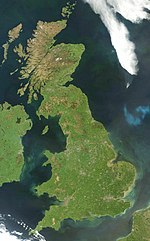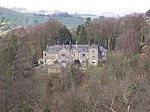Linton, North Yorkshire
Civil parishes in North YorkshireUse British English from July 2017Villages in North YorkshireWharfedale

Linton is a village and civil parish in the Craven district of North Yorkshire, England. The population as of the 2011 census was 176. It lies not far from Grassington, just south of the River Wharfe, and is 7 miles (11 km) north of Skipton. Linton Beck runs through the village and then joins the Wharfe at Linton Falls. The beck is crossed by two Grade II listed bridges on the village green, and is overlooked by Fountaine's Hospital, a Grade II* listed chapel and almshouse built in the style of Sir John Vanburgh. There is also a public house, the Fountaine Inn.The parish church of Saint Michael and All Saints stands close to the River Wharfe.
Excerpt from the Wikipedia article Linton, North Yorkshire (License: CC BY-SA 3.0, Authors, Images).Linton, North Yorkshire
Lauradale Lane,
Geographical coordinates (GPS) Address Nearby Places Show on map
Geographical coordinates (GPS)
| Latitude | Longitude |
|---|---|
| N 54.060743 ° | E -2.005693 ° |
Address
Lauradale Lane
BD23 5HQ , Linton
England, United Kingdom
Open on Google Maps











